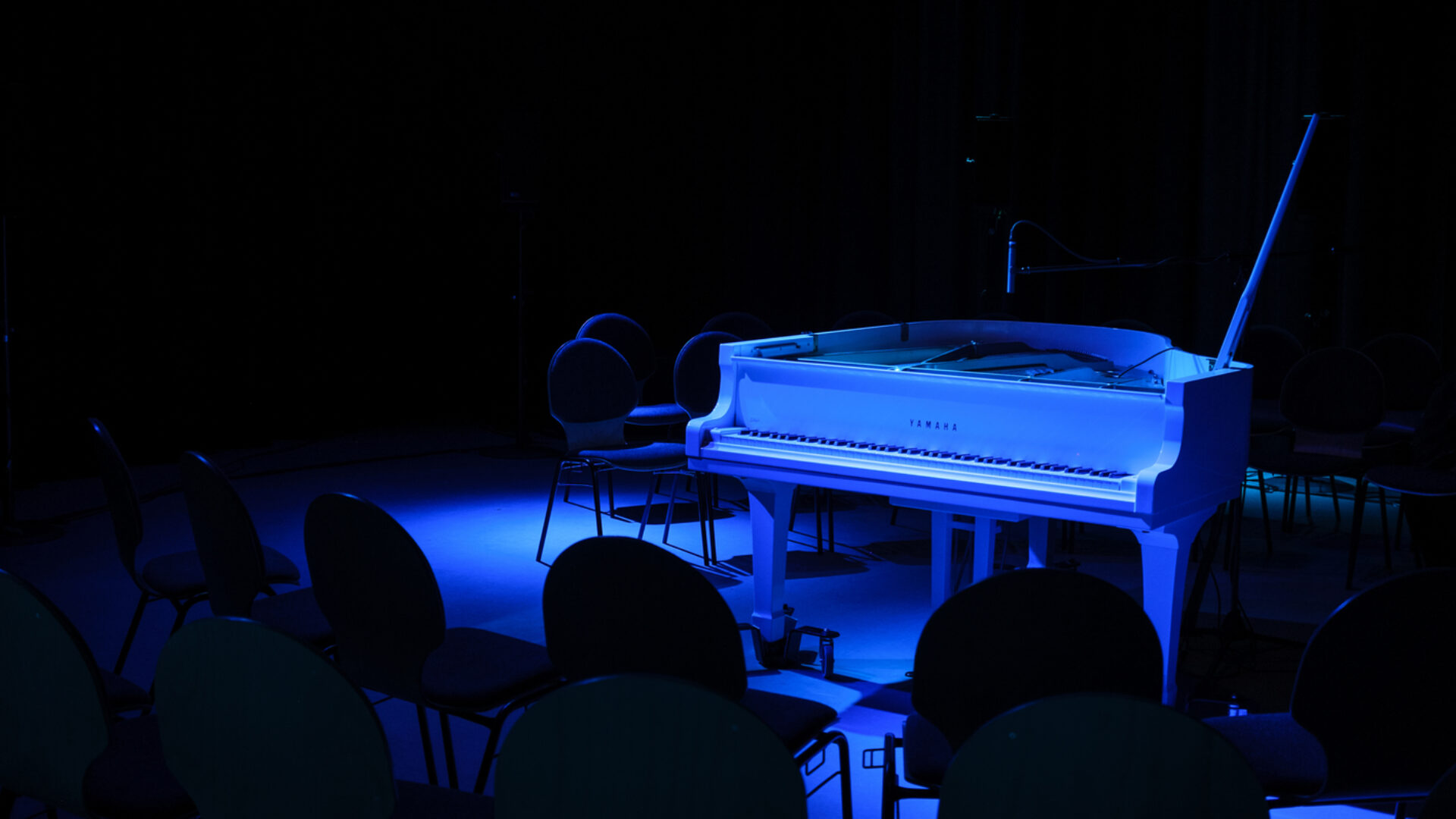These are the sketches of the second incubation period.
comment: This fragment is adequate for the beginning of the piece or of a section. As the name indicates, it is made of a tutti in which all play different things that nevertheless should merge in perception as a unity. This is achieved by the strings playing a chord derived from the harmonic series of G, in harmonics, including the natural deviations in intonation. The rhythmic proportions also follow the intervallic mathematical relationships of the harmonic series. The bass drum, however, includes the seed of deviation: while one voice could merge with the rhythmic proportions of the harmonic chord (the triplets), the other (quintuplets) simultaneously merges with the rhythm of the violin but ties the values in a different metre, non-superimposable with the overall verticality. Thus, it includes another speed, which could the originator of a deviation, or even specifically of an anamorphosis, as this different speed could be taken as the ground for a different time-perspective.
The initial left-hand pizzicato and the grouping of the bass-drum triplets in cycles of five are also non-conforming elements that may work as the point of departure for further deviations or transformations.
comment: In this excerpt, I am trying to give a concrete, but still, a musical example of what I define as morphing; The basic idea stems from the emerging rhythmical world of the gestural material of the D bass. I take it as a fundamental basis upon which I choose means of granular sonic productions. I give shape, or “μορφή” to the gestural descent of the d bass by preserving its rhythmic skeleton BUT altering its “flesh” which becomes an organic and granular canvas.
Result: a granular soundscape that is morphing the rhythmical structure of the d bass.
comment: This is another example of how can the deviation and transformation of a common point be understood. The common point is a line created by a continuous tremolo in the high woodblock and a by a maintained undefined high tone sul ponticello in the violin. This common point is later transformed into two different events: 1. Event: short interventions of the high woodblock in the percussion, later on, these interventions can be played in other percussion instruments. 2.Event: a distorted line played by the violin and the cello.
comment: This piece has take the percussion (as stated in the prefered option) versus the strings, yet united through a similar type of motion that results in a likely sound quality (notably the circular bowing taken from one of the prefered suggestions). The excerpt is very short and normally I might take more time to develop, but here I wanted to alreday suggest some variations to this texture that could be interpreted as deviations from the common point that lead to a possible anamorphosis. The notation is standard with several extended playing techniques.
comment: In this excerpt, I represent an example of rhythmic, percussive deformation. The first measure is the cell and it is deformed via two mechanisms:
by altering the durational space among the attacksandby gradually eliminating elements of the cell.
This results in a mechanic deformation and gradual stretch of the cell.
